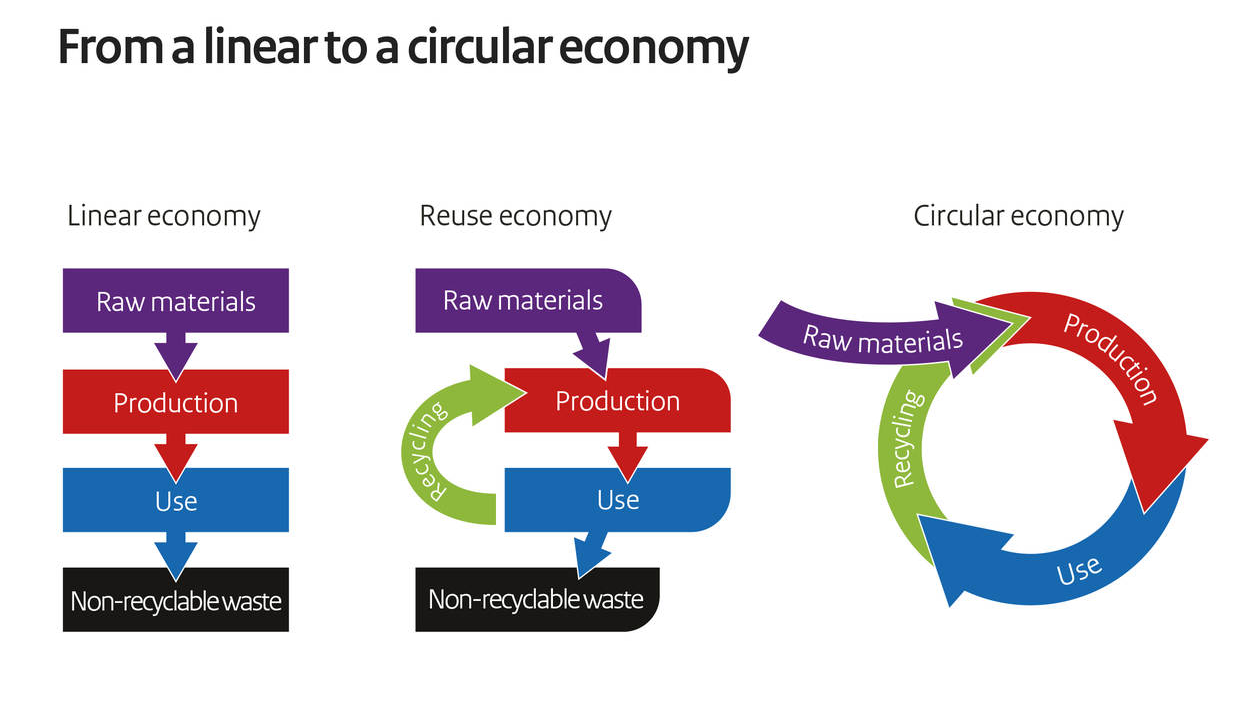For the most part, the world follows what is known as a linear economy, which means that raw materials are taken in, turned into a product, and then thrown away, never to be used again. Continuing on this path is unsustainable for the future of the planet because certain resources, such as metals and fossil fuels, are only available in finite quantities. This means that resources may be exhausted. However, this can be averted by adopting a circular economy that includes recycling, upcycling and reusing products.
Recycling is the conversion of waste into materials for new products, while upcycling is a form of reuse in which waste materials are used for new purposes. Converting scrap metal from beverage cans and old vehicles into raw materials for newly manufactured products is an example of recycling, while using old items directly as flower pots or furniture is an example of upcycling.
Reuse, upcycling and recycling are possible in a linear economy, but much of the waste is not recycled because many products simply were not manufactured with recycling in mind. Printed circuit boards (PCBs), for example, contain many different elements, such as copper, silver, gold, palladium and more. Although they are found in nearly all electronic waste, only an estimated 20% of them are properly processed.
The rest is disposed of in landfills or through environmentally harmful processes. This is because special chemicals and techniques such as solvent extraction, adsorption, electrochemical separation, etc. are required for extraction, making recycling a difficult and costly endeavor.
This is where the circular economy comes in as a concept. In it, products are actively designed so that they can be taken apart and recycled at the end of their useful life. Instead of third-party recyclers, products are designed so that their materials are recovered by the manufacturer itself for future use. Some companies have already embraced this idea, such as fast-food chain Burger King with reusable containers and furniture store IKEA, which aims to become 100% recyclable by 2030. These and many other companies are part of a transformation that will ultimately require both consumers and manufacturers to work together to move from the old linear economy to a more environmentally sustainable circular economy.




Recent Comments